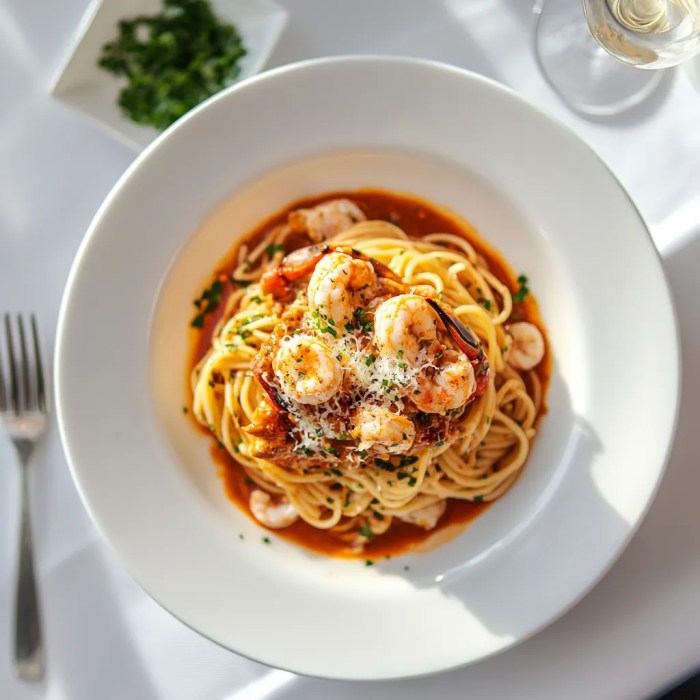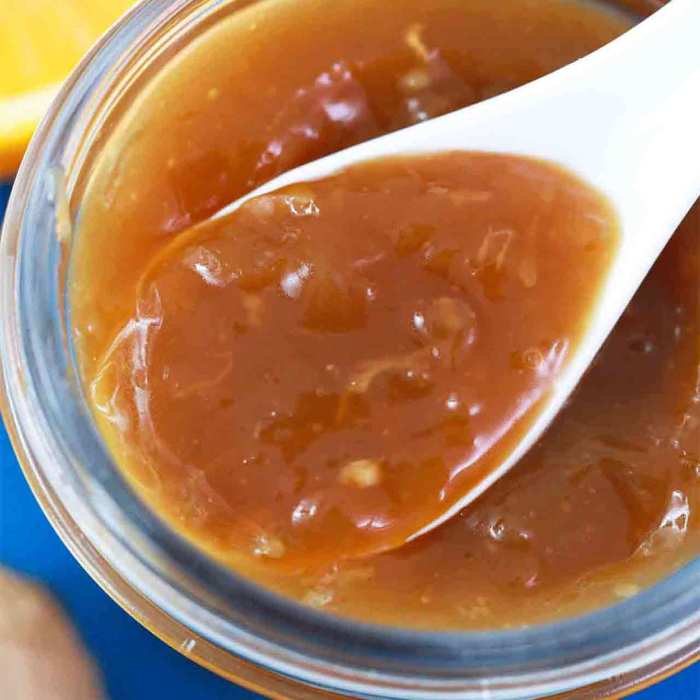Arrabbiata Sauce Recipe A Comprehensive Guide
Arrabbiata Sauce: A Deep Dive into the Classic Italian Dish

Source: amazonaws.com
Arrabiatta sauce recipe – Arrabbiata sauce, meaning “angry” in Italian, gets its fiery reputation from its generous use of chili peppers. However, this vibrant sauce offers much more than just heat; its depth of flavor comes from a perfect balance of sweet tomatoes, pungent garlic, and aromatic herbs. This exploration delves into the nuances of arrabbiata sauce, from variations and ingredient substitutions to cooking techniques and serving suggestions.
Arrabbiata Sauce Variations
While the classic arrabbiata sauce is already a culinary delight, several variations elevate its flavor profile. Exploring these variations demonstrates the versatility of this simple yet powerful sauce.
Three distinct variations highlight the impact of key ingredients on the overall flavor profile. The use of fresh versus canned tomatoes significantly affects both the texture and the cooking process.
- Anchovy Arrabbiata: The addition of anchovies introduces a savory, umami depth that complements the heat of the chili peppers. The salty brininess of the anchovies balances the sweetness of the tomatoes, creating a complex and rich flavor profile.
- Olive Arrabbiata: Kalamata olives add a briny, slightly bitter counterpoint to the sweetness of the tomatoes and the heat of the chili. The olives’ robust flavor enhances the sauce’s complexity and provides a textural element.
- Mushroom Arrabbiata: Earthy mushrooms, such as cremini or shiitake, add a meaty texture and umami depth to the sauce. Sautéed mushrooms before adding them to the sauce intensifies their flavor and creates a richer, more satisfying dish.
Arrabbiata sauce made with fresh tomatoes offers a brighter, more vibrant flavor and a smoother, less acidic texture compared to canned tomatoes. Fresh tomatoes require longer simmering to break down their structure and release their juices, achieving a velvety consistency. Canned tomatoes, on the other hand, offer convenience and a more concentrated flavor, requiring less cooking time. The acidity of canned tomatoes may require careful balancing with sugar or other sweetening agents.
| Ingredient | Quantity (Classic) | Quantity (Spicy) | Quantity (Vegetarian) |
|---|---|---|---|
| Canned Tomatoes | 2 (28 oz) cans | 2 (28 oz) cans | 2 (28 oz) cans |
| Garlic | 6 cloves, minced | 6 cloves, minced | 6 cloves, minced |
| Dried Chili Flakes | 1 tsp | 2 tsp + 1-2 fresh chilies | 1 tsp (or substitute with smoked paprika) |
| Olive Oil | 2 tbsp | 2 tbsp | 2 tbsp |
| Fresh Basil | 1/4 cup, chopped | 1/4 cup, chopped | 1/4 cup, chopped |
| Salt & Pepper | To taste | To taste | To taste |
| Preparation Method | Sauté garlic, add tomatoes and chilies, simmer until thickened. Stir in basil | Sauté garlic and fresh chilies, add tomatoes and dried chilies, simmer until thickened. Stir in basil. | Sauté garlic, add tomatoes and smoked paprika, simmer until thickened. Stir in basil |
| Notes | Adjust chili flakes to desired heat level. | Use caution when handling fresh chilies. | Smoked paprika adds depth of flavor. |
Arrabbiata Sauce Ingredients and Substitutions
Understanding the essential and optional ingredients allows for creative adaptations based on personal preference and pantry staples. Substituting ingredients can significantly impact the flavor profile, adding unique twists to the classic recipe.
A list of essential and optional ingredients, along with suitable substitutions, highlights the flexibility of the arrabbiata sauce recipe.
- Essential Ingredients: Canned or fresh tomatoes, garlic, olive oil, dried chili flakes, salt, and black pepper.
- Optional Ingredients and Substitutions:
- Fresh chilies (e.g., Calabrian chilies, serrano peppers): These offer a fresher, more vibrant heat than dried flakes. Calabrian chilies are milder, while serrano peppers offer a significantly hotter punch. (SHU varies greatly depending on the chili type and ripeness).
- Fresh basil: Adds a fresh, herbaceous aroma and flavor. Dried basil can be substituted, but use less as its flavor is more concentrated.
- Onion: Adds sweetness and depth of flavor. Shallots or leeks can be used as substitutes.
- Oregano: A classic Italian herb that complements the tomato flavor. Marjoram can be used as a substitute.
Different chili peppers significantly impact the heat level and flavor of the sauce. For example, Calabrian chilies (around 50,000 SHU) offer a fruity heat, while jalapeños (2,500-8,000 SHU) provide a more straightforward, pungent heat. The choice of chili pepper should align with the desired level of spiciness.
Enhancing the arrabbiata sauce with common pantry staples can significantly elevate its flavor profile.
- Herbs: Fresh or dried oregano, basil, thyme, rosemary.
- Spices: Red pepper flakes, smoked paprika, garlic powder.
- Vinegars: A splash of red wine vinegar or balsamic vinegar adds complexity and acidity.
Arrabbiata Sauce Cooking Techniques, Arrabiatta sauce recipe

Source: 30minutesmeals.com
Making arrabiatta sauce is all about that perfect balance of spicy tomatoes and garlic. For a completely different culinary experience, consider the ease of making a delicious apple sauce crockpot recipe ; it’s a wonderful contrast to the robust flavors of arrabiatta. Returning to our fiery sauce, remember that a good quality San Marzano tomato is key to achieving that authentic Italian taste.
The step-by-step process for making arrabbiata sauce emphasizes the importance of each stage in achieving the desired flavor and texture. Careful attention to ingredient selection and cooking time is crucial for creating a well-balanced sauce.
- Sauté Garlic (2-3 minutes): Gently sauté minced garlic in olive oil over medium heat until fragrant but not browned. This step infuses the oil with garlic flavor, enhancing the overall taste of the sauce.
- Add Chili Peppers (1 minute): Add dried chili flakes or fresh chilies (if using) and sauté briefly until fragrant. This step introduces the heat and complexity to the sauce.
- Add Tomatoes (15-20 minutes): Add canned or crushed fresh tomatoes to the pot. Simmer uncovered over low heat, stirring occasionally, allowing the sauce to reduce and thicken. This step develops the sauce’s flavor and reduces acidity.
- Season and Simmer (10-15 minutes): Season with salt and pepper to taste. Continue to simmer until the sauce reaches your desired consistency. This allows the flavors to meld and develop.
- Stir in Herbs (1 minute): Stir in fresh herbs, such as basil, during the last minute of cooking. This preserves their fresh flavor and aroma.
Achieving the perfect balance of acidity and sweetness involves careful ingredient selection and cooking time. Adjusting the amount of sugar or a touch of balsamic vinegar can counteract the acidity of the tomatoes. Simmering the sauce for a longer time reduces acidity and develops a deeper, richer flavor.
Serving Suggestions for Arrabbiata Sauce

Source: bonappetit.com
Arrabbiata sauce is incredibly versatile, extending beyond the classic pasta pairing. Exploring various serving suggestions showcases its adaptability and highlights unique flavor combinations.
Five unique serving suggestions, beyond pasta, highlight the sauce’s versatility and diverse flavor combinations.
- Pizza Topping: Arrabbiata sauce forms a flavorful base for pizza, offering a spicy and savory counterpoint to melted cheese and other toppings.
- Chicken or Vegetable Skewers Marinade: The sauce’s rich flavor infuses chicken or vegetable skewers, creating a flavorful and spicy dish.
- Shakshuka: Poached eggs in arrabbiata sauce create a hearty and satisfying breakfast or brunch option.
- Bruschetta Topping: The sauce adds a spicy kick to toasted bread topped with fresh tomatoes and basil.
- Roasted Vegetable Dip: Arrabbiata sauce can be thinned slightly and used as a flavorful dip for roasted vegetables.
The cooking method affects the sauce’s suitability for different pasta shapes. A thicker sauce is ideal for clinging to thicker pasta shapes like penne or rigatoni, while a thinner sauce is better suited for delicate pasta like spaghetti or angel hair. The ideal consistency depends on the pasta type to ensure proper coating and prevent a watery or overly thick sauce.
| Pasta Shape | Ideal Sauce Consistency | Flavor Profile Description |
|---|---|---|
| Spaghetti | Slightly thin | The sauce should coat the spaghetti evenly, allowing the flavors to meld without being overly heavy. |
| Penne | Medium thickness | The sauce should coat the penne’s ridges, providing a rich and flavorful experience with each bite. |
| Rigatoni | Thick | The sauce should cling to the rigatoni’s grooves, creating a hearty and satisfying dish. |
Arrabbiata Sauce Storage and Shelf Life
Proper storage techniques are crucial for maintaining the freshness and flavor of leftover arrabbiata sauce. Understanding the shelf life under various storage conditions ensures safe consumption.
Detailed instructions on storing and identifying spoilage ensure the safety and quality of the arrabbiata sauce.
- Refrigerator Storage: Store leftover arrabbiata sauce in an airtight container in the refrigerator for up to 3-4 days. The sauce may thicken slightly upon refrigeration.
- Freezer Storage: Arrabbiata sauce can be frozen for up to 2-3 months. Allow the sauce to cool completely before freezing. Thaw in the refrigerator overnight before reheating.
- Identifying Spoilage: Discard the sauce if it develops an off-odor, changes color significantly, or shows signs of mold.
Questions and Answers: Arrabiatta Sauce Recipe
Can I make Arrabbiata sauce ahead of time?
Yes, Arrabbiata sauce can be made ahead of time and stored in the refrigerator for up to 3 days or frozen for longer storage.
What type of pasta pairs best with Arrabbiata sauce?
Short, thick pasta shapes like penne, rigatoni, or fusilli are ideal for capturing the sauce.
Can I adjust the spiciness of the Arrabbiata sauce?
Absolutely! Adjust the amount of chili flakes or peppers to control the heat level to your preference.
What if I don’t have fresh tomatoes?
Canned crushed tomatoes are a great substitute. Just be sure to simmer them longer to reduce excess liquid.





















